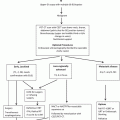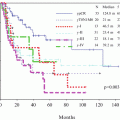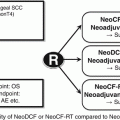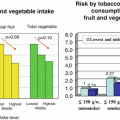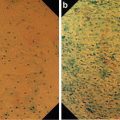Agent
Histology and number of pts
Treatment line
Regimen
Response (%)
PFS (m)
MST (m)
References
Bleomycin
SCC 29
First
NA
14
NA
NA
[2]
Bleomycin
SCC + AC 20
First
NA
20
NA
NA
[3]
Bleomycin
SCC 14
First
NA
0
NA
NA
[4]
5-FU
SCC 26
First
5-FU 500 mg/m2 × 5 days/q5wks
15
3.4
NA
[5]
S-1
SCC 20
Second or third
S-1 40–60 mg × twice daily day 1–28/q6wks
25
3.3
10.8
[6]
Cisplatin
SCC 44
First
Cisplatin 100 mg/m2/q3wks
19
4.1
6.4
[7]
Carboplatin
SCC 11
First
NA
9
NA
NA
[8]
Carboplatin
SCC 18
First
Carboplatin 130 mg/m2/day days 1, 3, 5
0
NA
NA
[9]
Nedaplatin
SCC 29
First or second
Nedaplatin 100 mg/m2/q4wks
51.7
NA
NA
[10]
Paclitaxel
SCC 18
First
Paclitaxel 250 mg/m2/q3wks
SCC 28
3.9
13.2
[11]
AC 32
AC 34
Paclitaxel
SCC 20
First, second
Paclitaxel 80 mg/m2 Day 1,8,15,22/q4wks
12
3.1
9.0
[12]
AC 66
Paclitaxel
SCC 52
Second
Paclitaxel 100 mg/m2 Day 1,8,15,22,29,35/q7wks
44.2
3.9
10.4
[13]
Docetaxel
AC 41
First
Docetaxel 100 mg/m2/q3wks
17
NA
NA
[14]
Docetaxel
AC 22
First or second
Docetaxel 75 mg/m2/q3wks
First 18
NA
3.4
[15]
Second 0
Docetaxel
SCC 35
First or second
Docetaxel 70 mg/m2/q3wks
First 36
4.7
8.1
[16]
AC 3
Second 16
Vindesine
SCC 26
First
Vindesine 3.0 mg/m2 weekly
17.3
NA
NA
[17]
Vindesine
SCC 9
First or second
Vindesine 4.0 mg/m2/q2wks
22.2
NA
NA
[18]
Vindesine
SCC 52
First
Vindesine 3 mg/m2 weekly
27
NA
NA
[19]
Vinorelbine
SCC 46
First or second
Vinorelbine 25 mg/m2 weekly
First 20
NA
6.0
[20]
Second 6
Etoposide
SCC 26
First
Etoposide 200 mg/m2 day 1, 2, 3/q3wks
19
4.0
NA
[21]
Irinotecan
SCC 10
First or second
Irinotecan 125 mg/m2 Day 1, 8, 15, 22/q6wks
15
3.8
6.1
[22]
AC 3
Methotrexate
SCC 26
First
Methotrexate 40 mg/m2 weekly
12
NA
3.2
[5]
Ifosfamide
SCC 32
First or second
Ifosfamide 1.5 g/m2 × 5 days
7
NA
NA
[23]
Gemcitabine
SCC 6
First
Gemcitabine 1,250 mg/m2 Day 1, 8, 15/q4wks
0
2
5
[24]
AC 14
Doxorubicin
SCC 20
First
Doxorubicin 60 mg/m2/q3wks
5
NA
1.8
[5]
12.2.1 Bleomycin
Bleomycin has been used for ESCC since the 1970s and 1980s. Bleomycin as a single agent for ESCC has been reported to have a response rate of 15–20 % [2–4]. A randomized trial comparing chemotherapy with bleomycin and best supportive care did not show a survival benefit [25]. Bleomycin is no longer used because of its pulmonary toxicity in combination with other drugs or radiotherapy.
12.2.2 Antimetabolites
5-FU, in combination with other drugs and/or radiation therapy, is the most commonly used chemotherapeutic drug for ESCC. When 5-FU was used as a single agent, a 15 % response rate was observed in previously treated patients administered intermittent bolus of 5-FU in an Eastern Cooperative Oncology Group trial [5]. S-1, an oral fluoropyrimidine preparation combining tegafur, gimeracil, and oteracil potassium in a molar ratio of 1:0.4:1, has been used for gastric, head and neck, lung, colon, and other cancers. The response rate of S-1 for pretreated patients with ESCC was reported to be 25 % [6].
12.2.3 Platinum Agents
Platinum agents have been used mostly in combination with 5-FU, topoisomerase inhibitors, and taxanes. As monotherapy, CDDP is administered at doses of 50–120 mg/m2 every 3–4 weeks; the cumulative response rate for ESCC was 21 % [7, 26, 27]. In a randomized phase II trial, addition of 5-FU to CDDP was compared to CDDP monotherapy administered at 100 mg/m2 every 3 weeks in 92 patients with ESCC. Although the response rate was higher in the combination group (35 vs. 19 %), survival was similar in both groups (monotherapy vs. combination: 33 vs. 28 weeks) [7]. Carboplatin, a second-generation platinum analogue, was developed to maintain the antitumor activity of CDDP and to reduce toxicity. Carboplatin has also been used mostly in combination; its single agent activity is limited, with response rates of 0–14 % [8, 9]. Oxaliplatin, a platinum derivative with less emetogenic, nephrotoxic, and ototoxic effects compared to CDDP, has been evaluated mainly in combination regimens for esophageal cancer. Nedaplatin, a second-generation platinum derivative, is ten times as water soluble as CDDP with less gastrointestinal and renal toxicity. In a phase II study of nedaplatin monotherapy at 100 mg/m2 via intravenous infusion every 4 weeks, five partial responses (55.6 %) were observed in nine patients with ESCC who had received prior chemotherapy, including two partial responses in four patients previously treated with CDDP [10].
12.2.4 Taxanes
Taxanes have shown activity against not only adenocarcinoma but also squamous cell carcinoma of the esophagus. Paclitaxel promotes the stabilization of microtubules, and it is a cell cycle-specific agent affecting cells in the G2/M phase [28]. Paclitaxel as monotherapy has been evaluated as first-line chemotherapy at a dose of 250 mg/m2 administered via 24-h intravenous infusion every 3 weeks. Of 52 patients who enrolled to this study, 18 patients had ESCC. Five (25 %) partial responses and five (28 %) minor responses were observed among the patients with squamous cell carcinoma. On the other hand, complete and partial responses were observed in 34 % of the adenocarcinoma group [11]. The efficacy of a weekly schedule of paclitaxel was also evaluated in 86 patients with esophageal cancer, including 32 cases of squamous cell carcinoma, at a dose of 80 mg/m2 weekly over a 1-h infusion. Of 15 squamous cell cancer patients who did not receive prior chemotherapy, 2 (13 %) achieved a partial response, and there were no responses among patients who received prior chemotherapy [12]. A weekly schedule at a dose of 100 mg/m2 administered via 1-h intravenous infusion on days 1, 8, 15, 22, 29, and 36 every 7 weeks was also evaluated for previously treated patients with esophageal cancer in a phase II trial. The overall response rate of patients with squamous cell cancer was 43.1 %, with four patients (7.8 %) achieving a complete response. Although grade 3 or 4 neutropenia (52.8 %), leukopenia (45.3 %), anorexia (9.4 %), and fatigue (9.4 %) were observed, weekly paclitaxel was highly active and well tolerated [13]. Docetaxel at doses of 75–100 mg/m2 administered every 3 weeks has also shown activity against adenocarcinoma of the esophagus, with a response rate of approximately 20 % in previously untreated patients [14, 15]. For squamous cell carcinoma, a phase II trial of docetaxel at a dose of 70 mg/m2 administered every 3 weeks was conducted. The majority of patients (94 %) had squamous cell carcinoma in this trial. The response rate was reported to be 16 % for pretreated patients and 36 % for untreated patients [16]. However, careful management of infection is needed because grade 3/4 neutropenia (88 %) and febrile neutropenia (18 %) were observed in this trial.
12.2.5 Vinca Alkaloids
The vinca alkaloid vindesine was evaluated in several phase II trials; it demonstrated reproducible antitumor activity, with a response rate of 20 % in cases of squamous cell carcinoma [17–19]. Vinorelbine, which has less neurotoxicity compared with vincristine and vindesine, was evaluated in patients with ESCC in a phase II trial by the European Organization for Research and Treatment of Cancer. Vinorelbine was administered weekly as a 25 mg/m2 short intravenous infusion. Response rates of 20 and 6 % were observed in untreated patients and pretreated patients, respectively [20].
12.2.6 Topoisomerase Inhibitors
There have been reports on the use of topoisomerase inhibitors for the treatment of ESCC. Etoposide, an inhibitor of type II topoisomerase, demonstrated a response rate of 19 % in one trial [21]. In contrast, other trials showed response rates of less than 5 % [29, 30]. Irinotecan, a type I topoisomerase inhibitor, has shown modest activity in ten previously treated patients with ESCC, with a 10 % response rate [22].
12.2.7 Others
12.3 Combination Chemotherapy
Because of the limited activity of single-agent chemotherapy, most of the drugs described above have also been tested in combination regimens. Two randomized trials compared best supportive care to combination chemotherapy. 5-FU and CDDP combination therapy failed to show an advantage in overall survival (both 12 months) compared to best supportive care in patients with ESCC, with or without prior surgery [31]. Another randomized trial in 24 patients with esophageal cancer, including 19 patients with squamous cell cancer, also failed to show a meaningful survival benefit with cyclophosphamide and doxorubicin combination therapy. Although these randomized trials did not show a survival benefit with combination therapy, combination regimens with 5-FU, CDDP, and newer agents have been used for the treatment of ESCC (Table 12.2).
Table 12.2
Combination chemotherapy for esophageal squamous cancer
Agent | Histology and number of pts | Treatment line | Regimen | Response (%) | PFS (m) | MST (m) | References |
|---|---|---|---|---|---|---|---|
5-FU + cisplatin | SCC 44 | First | Cisplatin 100 mg/m2 day 1 | 35 | 6.2 | 7.6 | [7] |
5-FU 1,000 mg/m2/day day1–5/q3wks | |||||||
5-FU + cisplatin | SCC 72 | First | Cisplatin 20 mg/m2 day 1–5 | NA | NA | 12 | [31] |
5-FU 1,000 mg/m2/day day1–5/q4wks | |||||||
5-FU + cisplatin | SCC 39 | First | Cisplatin 70 mg/m2 day 1 | 35.9 | Responders 3.5 | Responders 9.5 | [32] |
5-FU 700 mg/m2/day day1–5/q3wks | |||||||
5-FU + cisplatin | SCC 36 | First | Cisplatin 20 mg/m2 day 1–5 | 33.3 | NA | 7.5 | [33] |
5-FU 800 mg/m2/day day1–5/q4wks | |||||||
5-FU + cisplatin + leucovorin | SCC 5 | First | Cisplatin 50 mg/m2 day 1 | 40 | NA | 10.6 | [34] |
AC 5 | 5-FU 2,000–2,600 mg/m2/day day1,8 | ||||||
Leucovorin 500 mg/m2/day day1,8/q2wks | |||||||
5-FU + cisplatin | SCC 30 | First | Cisplatin 100 mg/m2 day 1 | 13 | 3.6 | 5.5 | [35] |
5-FU 1,000 mg/m2/day day1–5/q4wks | |||||||
Vinorelbine + cisplatin | SCC 71 | First | Vinorelbine 25 mg/m2/day day1, 8 | 33.8 | 3.6 | 6.8 | [36] |
Cisplatin 80 mg/m2/day day1/q3wks | |||||||
Gemcitabine + cisplatin | SCC 12 | First | Gemcitabine 800 mg/m2/day day2,9,16 | SCC 42 | NA | 9.8 | [37] |
AC 24 | Cisplatin 50 mg/m2/day day1,8/q4wks | AC 41 | |||||
Capecitabine + cisplatin | SCC 45 | First | Capecitabine 1,250 mg/m2 twice day1–14 | 57.8 | 4.7 | 11.2 | [38] |
Cisplatin 60 mg/m2/day day1/q3wks | |||||||
Vinblastine + carboplatin | SCC 16 | First | Vinblastine 5 mg/m2 day1, 15, 29 | 0 | NA | NA | [39] |
Carboplatin 450 mg/m2 day1, 29, 57/q6wks | |||||||
FOLFOX | SCC 56 | First | Oxaliplatin 100 mg/m2 day1 | 23.2 | 4.4 | 7.7 | [40] |
Leucovorin 400 mg/m2 day1 | |||||||
5-FU 400 mg/m2 day1 iv | |||||||
5-FU 2,400 mg/m2 day1–2 46 h div | |||||||
XELOX | SCC 64 | First or second | Capecitabine 1,000 mg/m2 twice daily day1–14 | 43.8 | 4 | 10 | [41] |
Oxaliplatin 120 mg/m2 day1/q3wks | |||||||
5-FU + nedaplatin | SCC 42 | First | 5-FU 800 mg/m2/day day1–5 | 39.5 | 2.5 | 8.8 | [42] |
Nedaplatin 90 mg/m2 day1/q4wks | |||||||
Paclitaxel + carboplatin | SCC 13 | First | Paclitaxel 200 mg/m2/day day1 | SCC 31 | 3.4 | 8.8 | [43] |
AC 22 | Carboplatin AUC5mg/h/ml/q3wks | AC 50 | |||||
Paclitaxel + cisplatin | SCC 30 | First | Paclitaxel 100–200 mg/m2/day day1 | SCC 48 | NA | NA | [44] |
AC 33 | Cisplatin 60 mg/m2 day1/q2wks | AC 59 | |||||
Paclitaxel + cisplatin | SCC 14 | Paclitaxel 90 mg/m2/day day1 | SCC 50 | NA | 7 | [45] | |
AC 6 | Cisplatin 50 mg/m2 day1/q2wks | AC 17 | |||||
Paclitaxel + cisplatin | SCC 39 | First | Paclitaxel 175 mg/m2/day day1 | 48.5 | 7 | 13 | [46] |
Cisplatin 75 mg/m2 day1/q3wks | |||||||
Nab-paclitaxel + cisplatin | SCC 33 | First | Nab-paclitaxel 250 mg/m2/day day1 | 60.6 | 6.2 | 15.5 | [47] |
Cisplatin 75 mg/m2 day1/q3wks | |||||||
Paclitaxel + nedaplatin | SCC 36 | First | Paclitaxel 175 mg/m2/day day1 | SCC 44.5 | 6.1 | 10.3 | [48] |
AC 3 | Nedaplatin 80 mg/m2 day1/q3wks | AC 33.3 | |||||
Paclitaxel + nedaplatin | SCC 46 | First | Paclitaxel 175 mg/m2/day day1 | 41.7 | 6.1 | 11.5 | [49] |
AC 2 | Nedaplatin 80 mg/m2 day1/q3wks | ||||||
Paclitaxel + nedaplatin | SCC 39 | First | Paclitaxel 175 mg/m2/day day1 | 46.1 | 7.1 | 12.4 | [50] |
Nedaplatin 80 mg/m2 day1/q3wks | |||||||
Capecitabine + paclitaxel | SCC 32 | First or second | Capecitabine 900 mg/m2 twice daily day1–14 | 56.3 | 5.2 | 11.7 | [51] |
Paclitaxel 80 mg/m2/day day1, 8/q3wks | |||||||
Docetaxel + cisplatin | SCC 38 | Second | Docetaxel 70 mg/m2/day day1 | 34.2 | 4.5 | 7.4 | [52] |
Cisplatin 75 mg/m2 day1/q3wks | |||||||
Docetaxel + nedaplatin | SCC 12 | Second | Docetaxel 30–40 mg/m2/day day1, 15 | 25 | NA | NA | [53] |
Nedaplatin 70–90 mg/m2 day1/q4wks | |||||||
Docetaxel + nedaplatin | SCC 48 | Second | Docetaxel 30 mg/m2/day day1 | 27.1 | 3.1 | 5.9 | [54] |
Nedaplatin 50 mg/m2 day1/q2wks | |||||||
Docetaxel + nedaplatin | SCC 12 | Second | Docetaxel 50 mg/m2/day day1, 8 | 0 | 2 | 7.8 | [55] |
Nedaplatin 50 mg/m2 day8/q3wks | |||||||
Docetaxel + nedaplatin | SCC 9 | Second | Docetaxel 50–60 mg/m2/day day1 | 22 | 2.1 | 9.5 | [56] |
Nedaplatin 70 mg/m2 day1/q4wks | |||||||
Paclitaxel + 5-FU + cisplatin | SCC 31 | First | Paclitaxel 175 mg/m2/day day1 | SCC 50 | 5.7 | 10.8 | [57] |
AC 30 | 5-FU 750-1,000 mg/m2 daily | AC 46 | |||||
Cisplatin 20 mg/m2 weekly/q5wks | |||||||
Docetaxel + 5-FU + cisplatin | SCC 39 | First | Docetaxel 50 mg/m2/day day1 | 66.6 | 7 | 13 | [58] |
5-FU 700 mg/m2/day day1–5 | |||||||
Cisplatin 70 mg/m2 day1/q3wks | |||||||
Docetaxel + 5-FU + cisplatin | SCC 18 | First | Docetaxel 30–40 mg/m2/day day1 | 88.9 | NA | NA | [59] |
5-FU 400 mg/m2/day day1–5 | |||||||
Cisplatin 40 mg/m2 day1/q2wks | |||||||
Docetaxel + 5-FU + cisplatin | SCC 30 | First | Docetaxel 60 mg/m2/day day1 | 72 | NA | 8.9 | [60] |
5-FU 800 mg/m2/day day1–5 | |||||||
Cisplatin 60 mg/m2 day1/q3–4wks | |||||||
Docetaxel + 5-FU + cisplatin | SCC 40 | First | Docetaxel 70 mg/m2/day day1 | 72.5 | 14 | 1-year 74.6 | [61] |
5-FU 700 mg/m2/day day1–5 | |||||||
Cisplatin 70 mg/m2 day1/q3wks | |||||||
Docetaxel + 5-FU + cisplatin | SCC 29 | First | Docetaxel 50 mg/m2/day day1 | 34.5 | 2.8 | 10.4 | [62] |
5-FU 700 mg/m2/day day1–5 | |||||||
Cisplatin 70 mg/m2 day1/q3wks | |||||||
Docetaxel + 5-FU + nedaplatin | SCC 43 | First | Docetaxel 75 mg/m2/day day1 | 62.8 | 6.6 | 10.2 | [63] |
5-FU 375 mg/m2/day day1 | |||||||
5-FU 2,600 mg/m2/day1–2 46 h div | |||||||
Nedaplatin 100 mg/m2 day1/q3wks | |||||||
Doxorubicin + 5-FU + cisplatin | SCC 41 | First | Doxorubicin 30 mg/m2/day day1 | 43.9 | 5 | 7.6 | [64] |
5-FU 700 mg/m2/day day1–5 | |||||||
Cisplatin 14 mg/m2/day day1–5/q4wks |
12.3.1 Combination with Platinum Agents
CDDP-based combinations appear to be the most studied and demonstrate the most favorable response activity. The combination of 5-FU and CDDP is the most frequently used regimen, but the schedules vary. Although a randomized trial showed poorer outcomes with combination therapy with 5-FU and CDDP than with CDDP monotherapy, CDDP (100 mg/m2 on day 1) and 5-FU (1,000 mg/m2/day continuous infusion for 96–120 h) repeated every 3–4 weeks have been the standard regimen for the treatment of patients with ESCC for two decades. 5-FU and CDDP showed a higher response rate (35 vs. 19 %) and longer survival (28 and 33 weeks), but these findings were not statistically significant [7]. Other trials with smaller numbers of patients and different treatment schedules showed response rates of 30–35 % and median survival times of 5.5–12.0 months [7, 31–35]. The combination of CDDP with vinorelbine was evaluated in 71 untreated patients with ESCC. A confirmed partial response was achieved in 33.8 % of patients, and the median survival time was 6.8 months [36]. CDDP (50 mg/m2; days 1 and 8) followed by gemcitabine (800 mg/m2; days 2, 9, and 16) repeated every 4 weeks was administered to 36 untreated patients with esophageal adenocarcinoma (67 %) and squamous cell carcinoma (33 %). The response rates for all patients and patients with squamous cell cancer were 41 and 42 %, respectively. The median survival time for all patients was 9.8 months [37]. A phase II study evaluated capecitabine, an oral fluoropyrimidine agent, in combination with CDDP for metastatic ESCC. Patients received 60 mg/m2 CDDP intravenously on day 1 and 1,250 mg/m2 capecitabine orally twice daily on days 1–14. Treatment cycles were repeated every 3 weeks. The overall response rate was 57.8 %, and the median survival time was 11.2 months. Common grade 3 or 4 non-hematological adverse events were anorexia (18/191, 9.4 %), fatigue (9/191, 4.7 %), constipation (6/191, 3.1 %), hand-foot syndrome (6/191, 3.1 %), and diarrhea (4/191, 2.1 %) [38].
Stay updated, free articles. Join our Telegram channel

Full access? Get Clinical Tree


